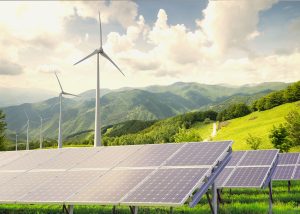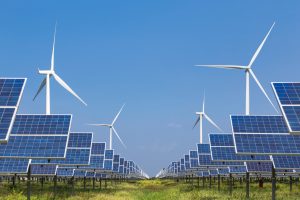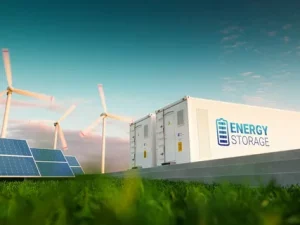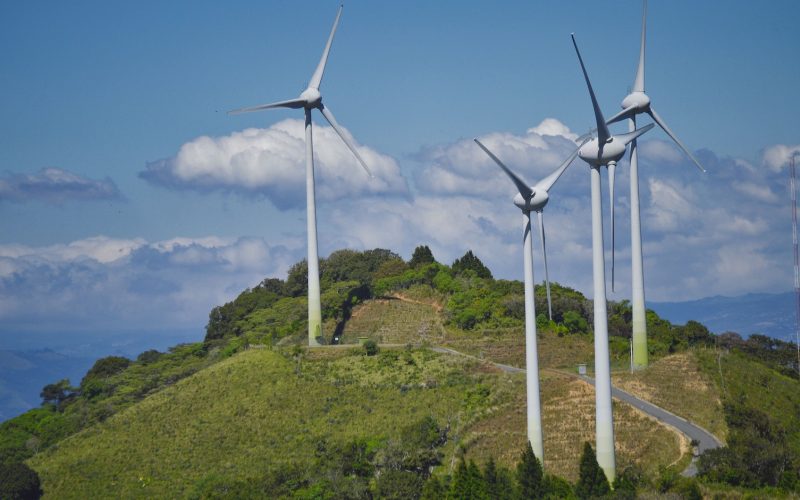Revolutionary Solar Thermal Technologies

Revolutionary Solar Thermal Technologies are significantly advancing Renewable Energy solutions. These technologies harness the sun’s energy more efficiently than traditional photovoltaic systems by focusing sunlight onto a small area to generate heat, which can then be used to produce electricity. One of the most notable advancements in this area is the development of high-efficiency solar thermal collectors that can operate at higher temperatures. These collectors are designed to maximize the absorption of solar radiation while minimizing heat loss, thereby increasing the overall efficiency of the system. Additionally, innovations such as molten salt storage allow for the retention of thermal energy, enabling power generation even when the sun is not shining. This capability addresses one of the primary limitations of solar energy and makes solar thermal technology a more reliable and consistent source of renewable energy.
Innovations in Renewable Energy are being driven by advancements in Solar Thermal technologies. The introduction of concentrated solar power (CSP) systems represents a significant leap forward. CSP systems use mirrors or lenses to concentrate a large area of sunlight onto a small receiver, where the concentrated light is converted to heat. This heat can then be used to produce steam that drives a turbine connected to an electric generator. Moreover, the integration of thermal energy storage systems with CSP plants allows for the generation of electricity on demand, providing a stable and dispatchable power source. This is particularly important for grid stability and reliability, making solar thermal technology a crucial component of the future renewable energy landscape.
Wind Energy Harvesting Innovations
Advanced turbines are enhancing renewable energy efficiency by utilizing cutting-edge designs and materials that increase their performance and reliability. Modern wind turbines are equipped with longer and lighter blades made from advanced composite materials, which allow them to capture more wind energy and convert it into electricity more efficiently. The use of sophisticated control systems and sensors enables real-time monitoring and adjustments to optimize turbine performance under varying wind conditions. Additionally, the development of direct-drive turbines, which eliminate the need for a gearbox, reduces maintenance requirements and increases overall efficiency. These advancements contribute to the reduction of the cost of wind energy, making it more competitive with traditional fossil fuels.
Floating wind farms are revolutionizing offshore renewable energy harvesting by enabling the deployment of wind turbines in deeper waters where wind resources are typically stronger and more consistent. Unlike traditional fixed-bottom turbines, floating wind turbines are anchored to the seabed using mooring lines and can be installed in locations with water depths of several hundred meters. This opens up vast new areas for wind energy development, significantly expanding the potential for offshore wind power generation. Floating wind farms also have a lower environmental impact on marine ecosystems compared to fixed-bottom installations. The ability to harness wind energy in deeper waters represents a major breakthrough in the quest for sustainable and scalable renewable energy solutions.
Algae-Based Biofuel Developments

Algae-based biofuel advancements are making significant strides in the Renewable Energy sector. Algae, as a feedstock for biofuel production, offers several advantages over traditional crops such as corn or soybeans. Algae can grow in a variety of environments, including saltwater and wastewater, and do not require arable land, making them a more sustainable and environmentally friendly option. Recent innovations in algae cultivation and harvesting techniques have increased the efficiency and yield of biofuel production. For example, the use of closed-loop photobioreactors allows for the controlled growth of algae under optimal conditions, resulting in higher biomass productivity. Additionally, advances in genetic engineering have enabled the development of algae strains with enhanced lipid content, which is crucial for the production of biodiesel.
Innovations in algae biofuel are enhancing Renewable Energy sustainability by providing a viable alternative to fossil fuels. Algae-based biofuels have a lower carbon footprint compared to conventional petroleum-based fuels, as algae absorb carbon dioxide during their growth process. This makes them a carbon-neutral or even carbon-negative energy source. Furthermore, the byproducts of algae biofuel production, such as proteins and carbohydrates, can be utilized in various industries, including animal feed and bioplastics, contributing to a circular economy. The integration of algae biofuel production with wastewater treatment facilities also offers the potential for cost savings and environmental benefits. These advancements position algae biofuels as a promising solution for reducing greenhouse gas emissions and promoting sustainable energy practices.
Pioneering Wave Energy Converters
Wave energy converters are transforming the Renewable Energy landscape by harnessing the immense power of ocean waves to generate electricity. These devices capture the kinetic and potential energy of waves and convert it into usable electrical power. One of the most innovative approaches in this field is the development of oscillating water column (OWC) systems, which use the motion of waves to compress and decompress air within a chamber, driving a turbine to produce electricity. Another promising technology is the point absorber, which consists of a buoy that moves with the waves, generating power through the relative motion between the buoy and a fixed structure. These technologies are designed to operate in harsh marine environments, with robust materials and engineering solutions that ensure durability and reliability.
Innovative approaches in harnessing the ocean’s Renewable Energy potential are paving the way for a new era of sustainable power generation. The deployment of wave energy converters in coastal areas can provide a consistent and predictable source of energy, complementing other renewable sources such as wind and solar. Additionally, wave energy has a high energy density compared to wind and solar, meaning that a smaller area is required to generate the same amount of power. This makes wave energy an attractive option for densely populated coastal regions where space is limited. Furthermore, the integration of wave energy converters with existing offshore infrastructure, such as wind farms and oil platforms, offers opportunities for cost savings and enhanced energy production. These pioneering technologies are poised to play a crucial role in the transition to a low-carbon energy future.
Enhanced Geothermal Systems

Enhanced Geothermal Systems (EGS) are revolutionizing Renewable Energy efficiency by tapping into the Earth’s vast and largely untapped geothermal resources. Unlike traditional geothermal systems, which rely on naturally occurring hydrothermal reservoirs, EGS technology involves creating artificial reservoirs by injecting water into hot, dry rock formations deep underground. This process enhances the permeability of the rock, allowing the injected water to be heated by the Earth’s natural heat and then extracted to generate electricity. EGS has the potential to significantly expand the geographic availability of geothermal energy, making it accessible in regions where conventional geothermal resources are not present. The ability to harness geothermal energy on a larger scale can contribute to a more diversified and resilient renewable energy portfolio.
Innovations in Renewable Energy are driving the adoption of Enhanced Geothermal Systems. Advances in drilling and reservoir stimulation technologies have improved the feasibility and cost-effectiveness of EGS projects. For example, the use of hydraulic fracturing techniques, similar to those used in the oil and gas industry, has enabled the creation of more efficient geothermal reservoirs. Additionally, the development of advanced geothermal power plants, such as binary cycle systems, allows for the utilization of lower-temperature geothermal resources, further expanding the potential for geothermal energy production. The integration of EGS with other renewable energy sources, such as solar and wind, can also enhance grid stability and reliability by providing a consistent and dispatchable power source. These innovations are positioning EGS as a key player in the future of sustainable energy.
Innovative Battery Technologies
Innovative battery technologies are enhancing renewable energy storage solutions by providing more efficient and reliable ways to store and distribute electricity generated from renewable sources. One of the most significant advancements in this area is the development of lithium-ion batteries with higher energy densities and longer lifespans. These batteries are capable of storing large amounts of energy in a compact and lightweight form, making them ideal for applications such as electric vehicles and grid-scale energy storage. Additionally, the use of solid-state electrolytes in next-generation batteries offers improved safety and performance compared to traditional liquid electrolytes. Solid-state batteries have the potential to revolutionize energy storage by providing higher energy densities, faster charging times, and longer cycle life.
Advanced batteries are improving the efficiency of renewable energy systems by enabling better integration and management of intermittent energy sources such as solar and wind. The ability to store excess energy generated during periods of high production and release it during periods of low production helps to balance supply and demand, ensuring a stable and reliable power supply. Furthermore, the development of flow batteries, which use liquid electrolytes stored in external tanks, offers a scalable and flexible solution for large-scale energy storage. Flow batteries can provide long-duration energy storage, making them suitable for applications such as grid stabilization and renewable energy integration. These innovative battery technologies are essential for the continued growth and success of renewable energy systems, as they address the critical challenge of energy storage and distribution.
Artificial Intelligence in Renewable Energy
AI optimizes Renewable Energy resource management and allocation by leveraging advanced algorithms and machine learning techniques to analyze vast amounts of data and make informed decisions. AI can be used to predict energy production from renewable sources such as solar and wind, taking into account factors such as weather conditions, historical data, and real-time sensor inputs. This enables more accurate forecasting and better planning for energy generation and distribution. AI can also optimize the operation of renewable energy systems by dynamically adjusting parameters such as turbine blade angles or solar panel orientations to maximize energy capture. Additionally, AI-driven demand response systems can automatically adjust energy consumption in response to changes in supply, helping to balance the grid and reduce the need for fossil fuel-based backup power.
AI-Powered Predictive
Predictive analytics enhance Renewable Energy efficiency and reliability by providing insights into the performance and maintenance needs of renewable energy assets. AI-powered predictive maintenance systems can analyze data from sensors and other monitoring devices to detect early signs of equipment degradation or failure. This allows for proactive maintenance and repairs, reducing downtime and extending the lifespan of renewable energy infrastructure. Furthermore, AI can be used to optimize energy storage and distribution by predicting demand patterns and managing the charging and discharging of batteries. This ensures that energy is available when and where it is needed, improving the overall efficiency and reliability of renewable energy systems. The integration of AI into renewable energy management represents a significant advancement in the quest for a sustainable and resilient energy future.
Hybrid Renewable Energy Systems
The integration of Renewable Energy sources for efficient power generation is a key strategy for enhancing the performance and reliability of renewable energy systems. Hybrid Renewable Energy Systems combine multiple renewable energy sources, such as solar, wind, and hydro, to create a more balanced and resilient energy supply. By leveraging the complementary nature of different energy sources, hybrid systems can provide a more consistent and reliable power output. For example, solar and wind energy can be combined to offset the variability of each source, as solar power is typically available during the day while wind power is often stronger at night. The integration of energy storage solutions, such as batteries or pumped hydro storage, further enhances the stability and reliability of hybrid systems by providing backup power during periods of low renewable energy production.
Smart grid technologies
Advanced technologies are enhancing the performance of Hybrid Renewable Energy Systems by enabling better integration and management of diverse energy sources. Smart grid technologies, which use advanced sensors, communication networks, and control systems, allow for real-time monitoring and optimization of hybrid energy systems. This ensures that energy is generated, stored, and distributed in the most efficient and effective manner. Additionally, the use of microgrids, which are localized energy systems that can operate independently from the main grid, offers greater flexibility and resilience. Microgrids can integrate various renewable energy sources and storage solutions to provide reliable power to remote or off-grid areas. These advanced technologies are driving the adoption of hybrid renewable energy systems, paving the way for a more sustainable and resilient energy future.










